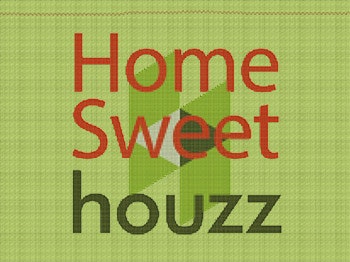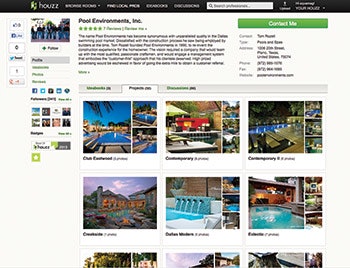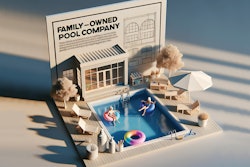
The buzz is all about Houzz. The site launched only in 2009, but quickly developed a following that now numbers more than 11 million monthly users, more than 200,000 of whom are home professionals. That would explain why the site bills itself as the largest residential design database in the world.
Thanks to its sophisticated search tools, thriving online community and bounty of more than 1.1 million images, homeowners are flocking to the site — and pool industry pros are following suit in hopes of snagging a few new clients.
So far, it’s a strategy that’s worked surprisingly well for some builders.
“We’ve just been shocked,” says Michelle Sparks, marketing director at Pool Environments in Plano, Texas. “We put up our first Ideabook and a project, and all of a sudden, our email was filling up. Some of our photos have been saved into people’s Ideabooks more than 10,000 times. So that was just amazing to us.”
How it Works
The user base of Houzz breaks into two parts: homeowners and design professionals. The site was built with the entire design process in mind, from simply gathering ideas and discussing them with other users to finding the right professional for a project.
Users can start by picking a room of the house — anywhere from the kitchen, bedroom and bathroom to the pool, patio and porch — and comparing work by professionals around the world. Additional search filters can narrow the results by design style and metro area.
“We do a lot of modern, contemporary work, and Houzz really draws in that clientele,” Sparks says. “So people who have been looking for a builder who does that kind of work have been drawn to us.” Conversely, if a homeowner already has a project in mind and needs a builder, Houzz offers the “find local pros” section for hunting down nearby professionals. Users can search by proximity and professional type, of which there are nearly 60 categories, including landscape contractors and pool and spa pros.
When a user finds an image they’d like to keep, he or she can save them to an “Ideabook,” a digital scrapbook of sorts. (The Ideabook is the equivalent of a “board” on Pinterest.) Users can browse Ideabooks created by fellow Houzz users, comment on them and share them on social media — meaning exposure and reach are easier to get than ever before.
Easier Leads, Easier Process
Josh Atkinson, vice president of South Carolina-based Atkinson Pools, was introduced to Houzz by a client.
“I was going through some design revisions with her, and she said, ‘Let me show you my Ideabook.’ I thought it was awesome,” he says. “When I got home from my appointment, I got on Houzz and was like, ‘We need to be on here.’”
Since joining a little more than a year ago, Atkinson says he’s landed 10 pool projects thanks to leads from Houzz. Other builders, like Katherine Caviness at Caviness Landscape Design in Oklahoma, have seen similar success.
“We get calls from people moving here from out of state who have found us from Houzz,” she says. “It’s brought us a lot more leads, and it’s basically free.”
As a meter of her success, Caviness keeps an eye on Google Analytics for her company’s website; in one month, she saw more than 850 visits to the site from Houzz alone with an average stay of more than three minutes.
In addition to the new leads Houzz can generate, builders are finding the site helps expedite the design process and overcome the challenges that come with communicating creative ideas.
“Houzz has really helped people hone their design ideas in a different way,” Atkinson says. “Instead of saying, ‘I’d like this thing on the end of the pool,’ they can point to something on Houzz and say, ‘I really like this water feature,’ or ‘I like this shape.’ It’s really defined the design process, and it’s helped people create their vision. And I think it helps mold a sense of ownership when they start creating that on Houzz.”
In a time when email makes it altogether too easy for clients to inundate a designer with a barrage of pictures, Houzz serves as an ideal space for collecting ideas and keeping them in one place.
“Our designer actually pulls up a client’s Houzz page while he’s designing to incorporate all of their ideas,” Sparks says.
Budget Adjustments
The rise of the Internet and new marketing methods have encouraged those in the pool industry to reconsider how they spend their advertising budget, and it’s no different with Houzz. Both Caviness and Sparks say their companies devote significant portions of their budget to professional photography of their projects, which they then use for promotion on their websites, social media and communities like Pinterest and Houzz.
“We don’t really spend a lot of money on advertising per se, but we feel like our work sells itself, and we’d rather go that route and have the project documented for the future and for other clients to see and get ideas from,” Sparks says.
Caviness echoes those sentiments.
“You can gain exposure for your company through Facebook, Twitter, Pinterest and Houzz free of charge. So a small business can really afford to hire a photographer to showcase their work beyond the normal Yellow Page ad,” she says.
Credibility Boost
Not only can homeowners on Houzz sort through the work you do, they can also read reviews of your work without leaving the site. Atkinson uses a feature in Houzz to send review requests to his clients. If they choose to do so, they fill out the form (which goes straight back to Houzz) and the review appears on the page.


These testimonials can be used in future brochures or, as Caviness does, posted to the company website for greater exposure.
On Houzz, the value of testimonials is compounded by badges and “Best of Houzz” awards. Badges are earned by reviewing fellow professionals, while Best of Houzz awards are given for both design and customer satisfaction. While winning a design award is especially competitive — they’re given to companies with the most popular images across the site — the customer satisfaction prizes are awarded to companies based on review number and value. Atkinson Pools, Pool Environments and Caviness Landscape have all won a Best of Houzz award for 2013; Caviness also won in 2012.
After winning his Best of Houzz award, Atkinson added the badge to the company website and business cards — he even has it on a placard to display at home shows.
“People use it as a talking point, because people are familiar with Houzz now,” he says.
Value for all?
While the benefits of Houzz are many, our experts say there is one downside: the time commitment.
“It does create a lot more work on our side because you have to keep everything up to date and fresh, so it is more labor-intensive. It’s kind of a full- time job now,” Caviness says.
In addition to sharing images into Ideabooks, users can also ask questions about the projects they find on Houzz. It’s answering these questions that Sparks says is a time-consuming task.
“I spend a lot of time looking back through our files. If somebody wants to know what tile was on a project, or what the dimensions were on a particular spa, I have to go back and look up that information,” she says.
However, Caviness adds that the free exposure to such a large network is worth the time investment.
“It doesn’t cost anything to do it, so gaining even one small project is beneficial,” she says. “We’ve gotten opportunities for jobs and we’ve made several contacts through Houzz.”
According to Sparks, joining Houzz is worthwhile for both high-end and mid-range builders alike.
“I think it could be a positive site for any company as long as they’re willing to go the extra mile and participate,” she says. “We work really hard at what we do, and to see people responding to our work makes you feel good.”
Dreamers vs. Do-ers
Houzz and Pinterest are similar online communities in that both focus on sharing images and creating boards of ideas. However, the fundamental difference between the two sites is the person behind the mouse.
“A lot of the clients that have come to us from Houzz are already actively pursuing a project as opposed to some future idea. They’re more purchasers as opposed to dreamers,” Atkinson says.
Caviness agrees.
“I think the people who use Houzz are in the process, or are getting ready to start the process, of a project. I think people that browse Pinterest just like to look,” she says.
Bottom line: If you’re limited on time and need to choose between Pinterest and Houzz, spend more time on Houzz — it’s the place you’re likely to gather more leads.
Comments or thoughts on this article? Please e-mail [email protected].








































